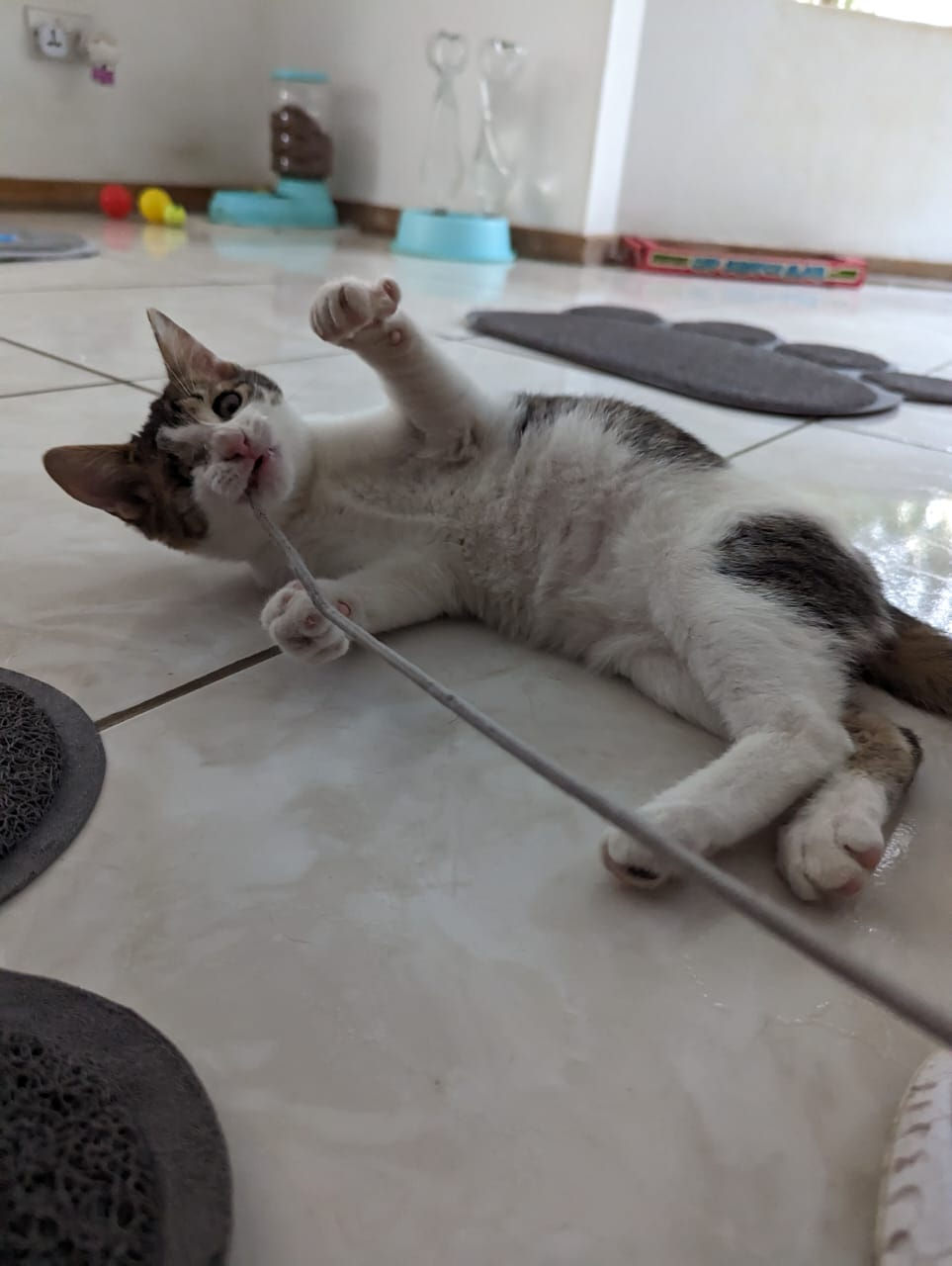Meet Nemo!
*Sensitive readers are cautioned; some of the images contained at the bottom of this article are of a graphic nature*
You may wonder if his nautically inclined name holds any merit, sadly this beautiful boy has a story behind his name.
Allow me to take you back to the 13th of April when one of our selfless volunteers found herself in a situation where a kitten with a severely infected eye was dumped on her. She reached out to Animal Assist who, upon seeing images of Nemo, decided that urgent medical care was needed.
Nemo’s one eye was riddled with infection; the vet gave a strong round of antibiotic medication. Religiously applied 3 times a day, and within a few days the swelling in the inflamed eye was reduced significantly, however there was no hope to save the eye. The infection had been left untreated for too long and his best chance of living a normal life would be a complete removal of the eye. Some of our readers may feel that this would be a disadvantage for a cat, however their senses are so heightened that Nemo has adapted to using his other senses to make up for the lack of one eye. Which brings me to his name, this little fighter has shown us that with a little bit of TLC, medication and good food, he has turned into the most lovable and playful little pirate kitten you ever did see!
While we are unsure of the specific cause of the infection, below are some common eye infections to look out for in your feline friends. The most common cause of eye infections in cats is Conjunctivitis, this is where the pink membrane of the eye, the conjunctiva, becomes swollen and inflamed. A cat with conjunctivitis will squint and/or blink persistently. The tissue around the eye may become reddened and the eye will release a discharge. The most common cause of conjunctivitis in cats is the herpes virus, but other viral and bacterial infections also can increase the risk. If left untreated it leads to blindness and in severe cases like with our Nemo, surgery is the only option. Other common eye diseases include Cataracts, where the lens of the eye turns cloudy and your cats vision will be blurred and will have difficulty seeing clearly. It is often corrected with surgery, however in elderly cats, surgery is avoided and owners are encouraged to adapt home life to accommodate the cat. While Glaucoma has similar symptoms, the condition is most commonly caused by an infection, trauma, an inflammatory disorder, a tumor, or an abnormal shift in the lens of the eye. Symptoms can include pain, redness, discharge, and cloudiness in the eye. In very severe cases, you can see that the affected eye is larger than the healthy eye. Ulcerative Keratitis also has symptoms similar to that of Glaucoma, with swelling, pain, cloudiness and occasional discharge as symptoms to look out for.
The true sadness behind this story is that it could have been avoided, a simple antibiotic ointment 2 or 3 times a day would have prevented this baby being left with only 1 eye and spared the trauma of being in pain, left hungry, and unwanted.

Nemo Today (June 5th 2023) : Ready for adoption - The clown of the Cattery! He will make someone a fantastic companion





